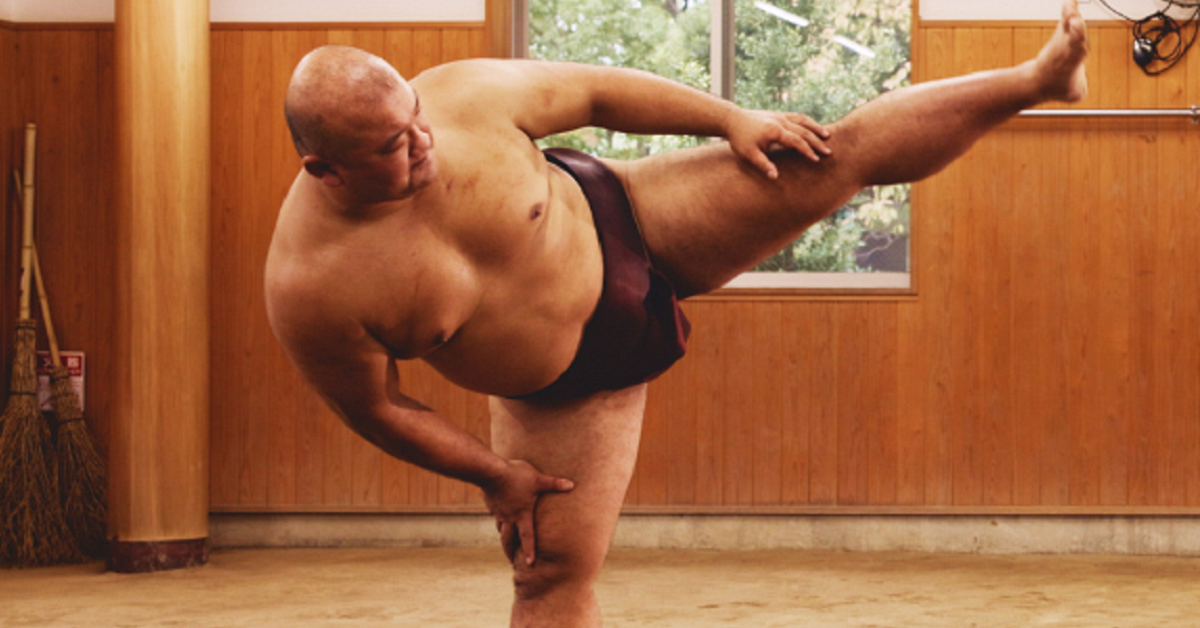Shiko is a signature move in sumo where wrestlers raise one leg high and stomp the ground with force. This simple yet profound motion carries deep cultural meaning and offers remarkable benefits for both the body and mind. Practicing Shiko improves lower-body strength, core stability, flexibility, and also sharpens mental focus through controlled breathing and precise movement.
History and Cultural Background of Shiko
The origins of Shiko are ancient, tracing back to Japanese religious rituals and agricultural ceremonies. The act of raising one leg high and stomping the ground carries the ritual meaning of pacifying the earth and driving away evil spirits.
By the Edo period, when sumo developed as both martial art and entertainment, Shiko had already been established as a basic training practice for wrestlers. During the ring-entering ceremony, Shiko showcases the wrestler’s presence and fighting spirit.
Top-ranked wrestlers such as yokozuna and ozeki perform Shiko with a deeply lowered stance and a high leg raise, expressing both power and stability. This movement combines beauty and strength, making it a symbolic gesture in sumo culture.
Correct Way to Perform Shiko
Shiko is a full-body movement that engages multiple muscle groups. Below is the basic form:
| Step | Movement | Key Points |
|---|---|---|
| 1 | Stand with feet wider than shoulder width | Keep weight balanced |
| 2 | Slowly raise one leg | Straighten the knee, point toes outward |
| 3 | Stomp the raised leg down | Exhale while stomping |
| 4 | Repeat with the opposite leg | Alternate left and right |
| 5 | Continue for about 10 reps | Beginners should focus on form over numbers |
Beginners should avoid raising the leg too high to prevent strain on the hips and knees. As you progress, focus on both the height of the leg raise and the depth of the squat to increase the intensity.
Muscle Groups Worked by Shiko
Shiko is not just a lower body exercise—it also works the core and upper body.
| Main Muscle Group | Benefit |
|---|---|
| Quadriceps | Improves lower-body stability and pushing strength |
| Hamstrings | Enhances running and jumping ability |
| Gluteus maximus | Improves posture and stabilizes pelvis |
| Transverse & rectus abdominis | Strengthens core and prevents back pain |
| Adductors | Increases hip flexibility |
Thus, Shiko is a comprehensive exercise that trains from the lower body up through the core.
Health Benefits
The benefits of Shiko go beyond athletics and into daily life:
- Fall prevention
Common in older adults due to reduced leg strength and balance—Shiko helps train both. - Improved circulation and warmth
Moving large muscles in the thighs and hips boosts blood flow and helps maintain body temperature. - Lower back pain prevention
Flexible hips and stable pelvis reduce strain on the lower back.
How to Incorporate Shiko into Daily Life
Shiko requires no special equipment or large space, making it ideal for home practice.
- 10 reps in the morning as a warm-up
- 5 reps during work breaks
- After-bath stretching routine
For those with limited mobility, simply lowering into a deep squat without lifting the leg high can still be effective. Consistency is key for results.
Safety Precautions
While generally safe, improper form can cause injury.
| Precaution | Reason |
|---|---|
| Avoid lifting the leg too high | Reduces strain on hips and back |
| Do not hold your breath | Prevents dizziness |
| Practice on a non-slip surface | Prevents falls |
| Reduce reps when fatigued | Avoids muscle strain |
Conclusion
Shiko is both an iconic sumo movement and a highly effective full-body exercise. With proper form and breathing, it can be practiced by anyone regardless of age or fitness level. Incorporating Shiko into your routine can lead to improved fitness, better posture, and enhanced mental focus.





コメント